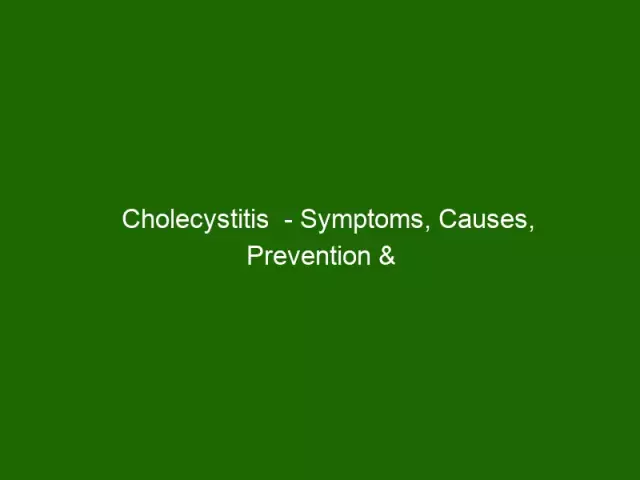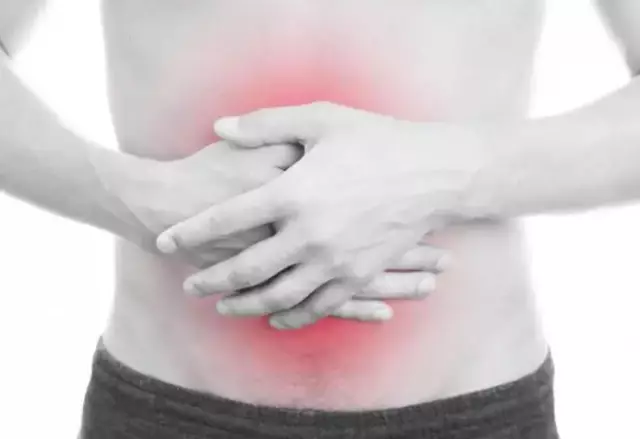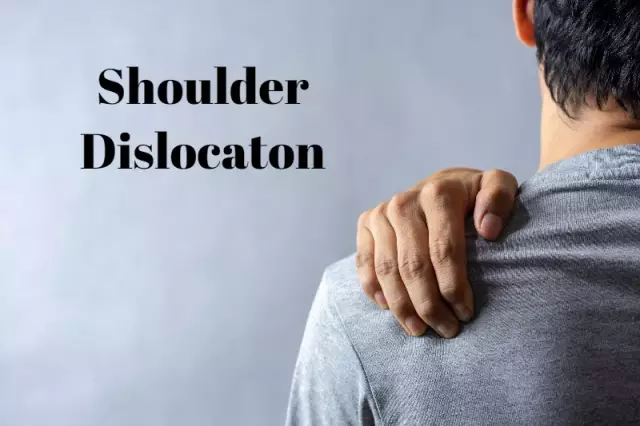- Author Rachel Wainwright [email protected].
- Public 2023-12-15 07:39.
- Last modified 2025-11-02 20:14.
Cholecystitis
Cholecystitis is an inflammation of the gallbladder. The disease is one of the most common pathologies of the gastrointestinal tract. It occurs more often in people after 40 years, although it can be at any age, even childhood, women get sick more often than men.
Causes of cholecystitis

Cholecystitis is caused by an infection that enters the gallbladder from the intestine when the sphincter of Oddi (the muscle ring that separates the gallbladder from the intestine) is deficient, which in turn occurs due to congestion in the gallbladder, which occurs most often, or gastritis. Sometimes the infection can penetrate with the flow of blood or lymph from other foci.
Stagnation of bile in the gallbladder is not uncommon. It occurs as a result of a sedentary lifestyle, and in violation of the diet. These are irregular digestion, rare and abundant meals, as well as frequent consumption of fatty, fried, smoked and salty foods. The provoking factor of stagnation of bile in the gallbladder in women is pregnancy, since the enlarged uterus compresses the gallbladder. Western doctors call the cause of the development of cholecystitis three F: female, fat, fertile, which can be translated as: woman, fat, fertile. Obesity is often associated with eating disorders and inactivity, and pregnancy further increases the risk of cholecystitis.
Types of cholecystitis
Cholecystitis is acute and chronic. Chronic cholecystitis can be simple or calculous. Chronic calculous cholecystitis is also called gallstone disease. This is a metabolic disorder accompanying the stagnation of bile in the gallbladder, in which bile thickens so much that bile acids precipitate in the form of sand. As the pathological process develops, the sand increases in size, gallbladder stones are gradually formed, ranging in size from 0.2 to 3 cm and more in diameter. Stones aggravate the course of chronic cholecystitis, as they can cause spasms of the gallbladder and blockage of the bile ducts, resulting in severe complications in the form of empyema, gangrene, rupture of the gallbladder.
Cholecystitis symptoms

The main symptom of acute cholecystitis is the appearance of intense pain in the right hypochondrium, often radiating to the right scapula and shoulder. A painful attack called biliary colic occurs after eating fatty, fried, or spicy foods. In addition to her, an attack of biliary colic can be triggered by seafood, melon and some other types of foods that cause an increased outflow of bile and spasm of the gallbladder. Colic is accompanied by nausea and vomiting, which does not bring relief. Acute cholecystitis may be accompanied by fever. Usually, the painful attack disappears within a few hours, weakness and poor health are felt for at least another day. If untreated, acute cholecystitis almost always becomes chronic.
Chronic cholecystitis may not have symptoms until an exacerbation occurs. Symptoms of chronic cholecystitis during an exacerbation are no different from the symptoms of acute cholecystitis, except that an attack of biliary colic occurs more than once, but from time to time with gross errors in nutrition. With calculous cholecystitis, biliary colic can be caused by the movement of a stone in the gallbladder, which caused a spasm and blockage of the bile duct with a stone. Biliary colic is very painful for the patient, he rushes about, tries to accept a position in which the pain would be less, and does not find him. Attacks vary in duration, from half an hour to six hours. An attack lasting more than six hours requires urgent medical intervention, as it indicates the development of one of the severe complications of cholecystitis.
Diagnosis of cholecystitis
The diagnosis is made on the basis of the characteristic symptoms of cholecystitis, namely the symptoms of biliary colic. To clarify the diagnosis and determine the type of cholecystitis, the following diagnostic methods are used:
- Fibrogastroduodenoscopy (FGDS) is an endoscopic diagnostic method that allows you to examine in detail the state of the mucous membrane of the upper part of the gastrointestinal tract, in particular, the sphincter of Oddi. Also during FGDS, bile is taken for examination;
- Ultrasound. This simple and safe method allows you to determine the presence of stones in the gallbladder and its ducts.
These methods are basic in the diagnosis of cholecystitis. In some cases, if a tumor is suspected, CT (computed tomography) or MRI (magnetic resonance imaging) may be used.
Cholecystitis treatment
Treatment of cholecystitis in acute and exacerbated chronic form is carried out in a hospital, since there is always a risk of complications. At the beginning, an attack of biliary colic is removed: painkillers, anti-inflammatory drugs are administered. Hunger and bed rest are prescribed. After the acute symptoms subside, they begin etiotropic (aimed at eliminating the cause of the disease) treatment of cholecystitis.

Treatment of cholecystitis in acute and simple chronic form consists in antibacterial therapy, which allows to eliminate the infection, drugs that thin bile and facilitate its evacuation, and then in the normalization of lifestyle and nutrition. The most important remedy is a diet for cholecystitis. Almost all cases of biliary colic are always associated with the intake of prohibited foods, therefore, cholecystitis nutrition should be organized so as to completely eliminate these foods: fatty, fried, smoked, spicy and salty foods, seafood, alcohol and some others, about which the patient, as as a rule, he learns from his own sad experience. The diet for cholecystitis consists in fractional food intake - in small portions during the day. There should be at least five meals. The diet for cholecystitis should be balanced,and consist of easily digestible products, mainly dairy and vegetable. For obese patients, cholecystitis nutrition is selected taking into account the need to reduce weight, and consists of low-calorie foods while maintaining the principle of fractionality and frequency.
Treatment of cholecystitis in calculous form is surgical, and it consists in removing the gallbladder with stones. All other methods - drug dissolution of stones and wave lithotripsy are ineffective, and almost 100% lead to relapse.
Alternative treatment of cholecystitis
Alternative treatment of cholecystitis consists in the use of medicinal herbs in the form of teas and collections that have anti-inflammatory and choleretic effects. These are St. John's wort, corn silk, barberry, immortelle, tansy and some others.
Alternative treatment of cholecystitis can be quite effective, but it can be carried out only in the stage of residual symptoms in the acute form of the disease, and in the period between attacks with simple chronic cholecystitis. Alternative treatment of cholecystitis in the stage of biliary colic is extremely dangerous, since this condition requires emergency medical measures.
YouTube video related to the article:
The information is generalized and provided for informational purposes only. At the first sign of illness, see your doctor. Self-medication is hazardous to health!






